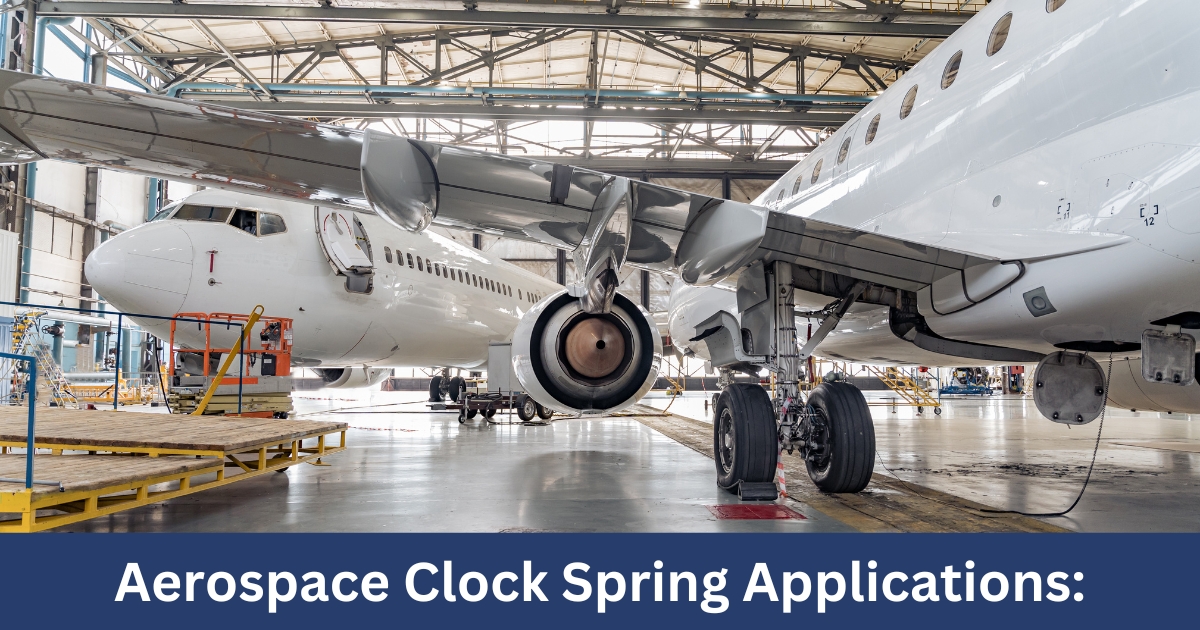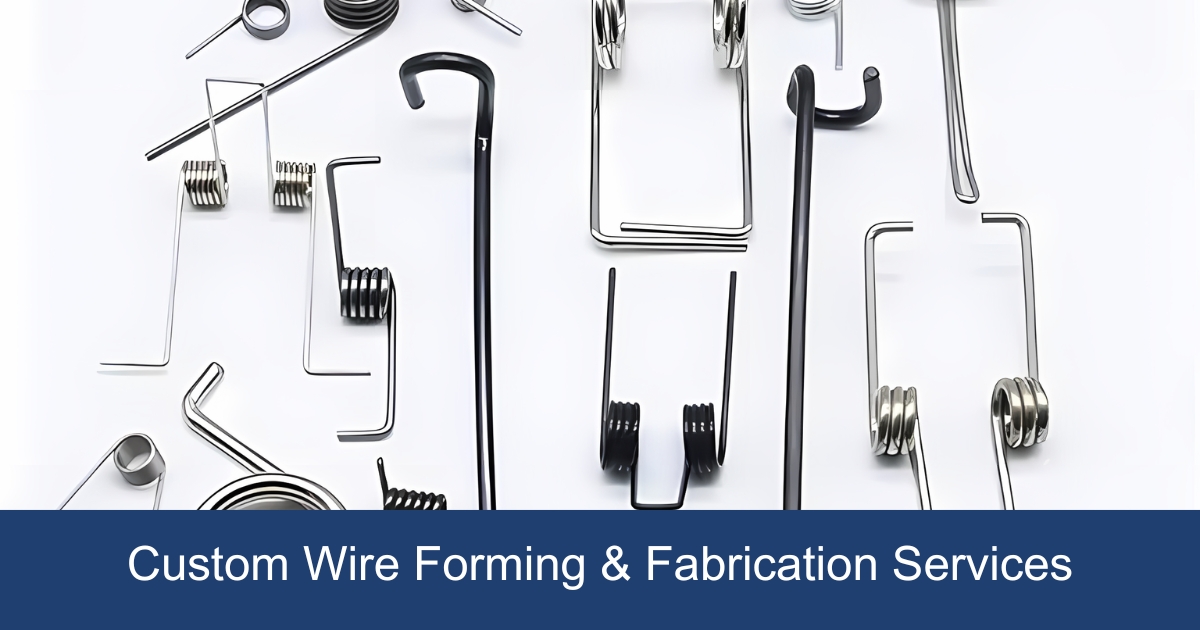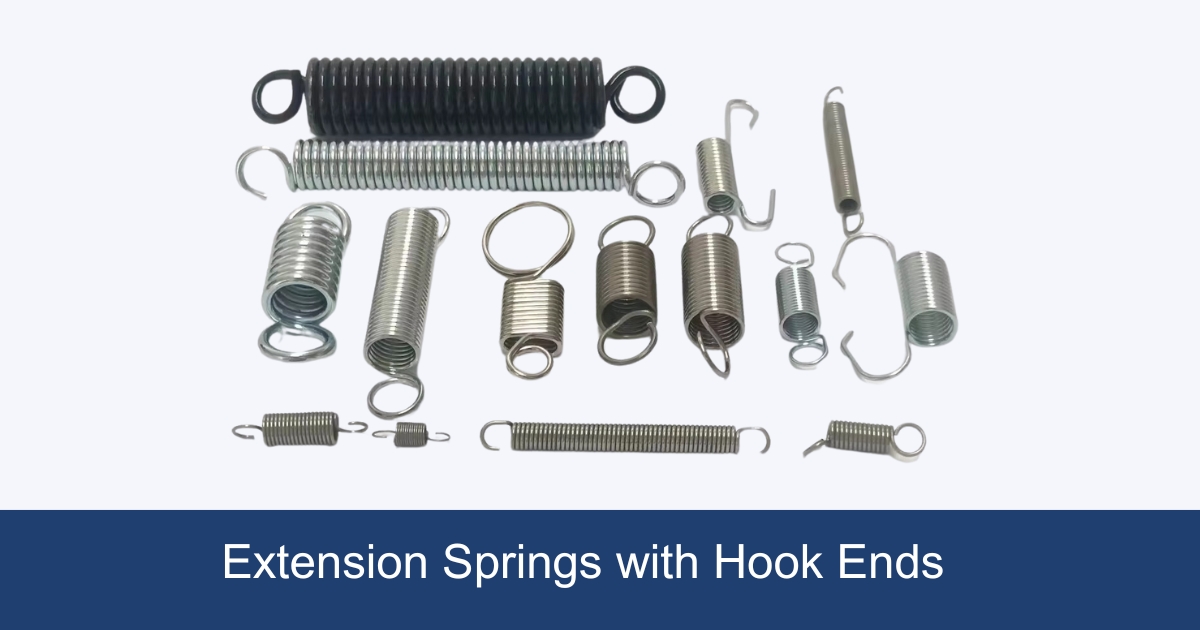The lifespan of compression springs varies greatly, depending on material quality, usage conditions, and stress levels. High-quality springs in optimal conditions can last for millions of cycles. In industrial settings, they may need replacement within a few years, while in less demanding applications, they can last several years to decades. Precise lifespan predictions require consideration of the spring’s specifications, environment, and application.

Factors Influencing Lifespan of Compression Springs
The lifespan of a compression spring is influenced by various factors that can impact its durability and longevity. Factors affecting the lifespan of a compression spring include:
- Material Selection: The choice of material significantly affects the spring’s lifespan. Different materials offer varying levels of strength, resistance to corrosion, and durability, impacting how well the spring withstands stress and fatigue over time.
- Design Characteristics: Proper spring design is crucial for longevity. Errors in design, such as incorrect specifications or insufficient coils, can lead to premature failure and shorten the spring’s lifespan.
- Environmental Conditions: The environment in which the spring operates plays a critical role in its lifespan. Factors like temperature variations, exposure to chemicals, and humidity levels can affect the spring’s performance and longevity.
- Load Distribution and Direction: How the load is distributed on the spring and the direction of the load can impact its lifespan. Proper load distribution ensures that stress is evenly distributed, reducing the risk of premature failure.
- Wear and Tear: Normal usage and wear over time can influence the lifespan of a compression spring. Regular maintenance and inspection to address signs of wear, damage, or deformation are essential to prolong the spring’s longevity.
- Compression Limits: Exceeding the compression limits of a spring can lead to premature failure and reduced lifespan. Understanding the maximum compressive force a spring can withstand is crucial to avoid performance failures and damages.
Estimating Compression Spring Life
Factors Influencing Spring Life
- Material Properties: The type of material used in a spring’s construction plays a pivotal role in its durability. High-grade metals like chrome silicon or stainless steel offer enhanced fatigue resistance compared to their counterparts, extending the spring’s operational life.
- Design Considerations: Proper spring design is critical for maximizing lifespan. Factors such as wire diameter, coil count, and spring index (coil diameter divided by wire diameter) need to be optimized to reduce stress concentrations and evenly distribute loads.
- Operational Conditions: The environment in which a spring operates significantly affects its longevity. Conditions such as temperature extremes, corrosive environments, and cyclic loading patterns must be accounted for during the design phase to prevent premature failure.
Estimation Methods
| Method | Description |
|---|---|
| Analytical Calculation | Utilizes mathematical models and fatigue life equations, incorporating material properties and cyclic stress levels, to predict spring life. |
| Empirical Testing | Subjecting the spring to controlled conditions that mimic its operational environment provides real-world data on its lifespan. |
| S-N Curves | These curves, specific to each material, plot the relationship between stress (S) and the number of cycles to failure (N), aiding in lifespan estimation. |
Practical Considerations
- Preload and Deflection Limits: Understanding the maximum safe deflection and preload can prevent overstressing the spring.
- Maintenance and Inspection: Regular checks for signs of wear, corrosion, or deformation can identify potential issues before they lead to failure.
- Replacement Strategies: Developing a scheduled maintenance and replacement plan based on estimated spring life ensures continuous operation without unexpected downtimes.
Improving and Extending Compression Springs Life
Improving the fatigue life of a compression spring involves several strategies, focusing on design, material selection, manufacturing processes, and surface treatment to enhance durability and performance under cyclic loading. Here are key approaches to consider:
- Material Selection: Choose high-quality spring materials with good fatigue strength. Spring steel alloys, such as chrome silicon or chrome vanadium, offer superior fatigue properties compared to standard carbon steels. Stainless steel may be preferred for corrosive environments.
- Spring Design Optimization:
- Correct Dimensioning: Ensure the spring is designed with the correct wire diameter, coil diameter, and free length to minimize stress concentrations.
- Reduced Stress Gradient: Design the spring to have a low and uniform stress distribution. This can be achieved by maintaining a consistent coil diameter and avoiding abrupt changes in cross-sectional area.
- Pitch Control: Properly controlling the pitch of the spring can reduce bending stresses that contribute to fatigue failure.
- Surface Treatment:
- Shot Peening: This process involves bombarding the surface of the spring with small steel or glass beads. The impact creates compressive stresses on the surface, increasing resistance to crack initiation and propagation.
- Surface Finishing: Smooth surface finishes reduce the risk of crack initiation. Processes such as grinding and polishing can remove surface imperfections and improve fatigue life.
- Coatings: Applying coatings can protect the spring from environmental factors that may cause corrosion, which can lead to fatigue failure. Nickel and zinc plating are common options.
- Heat Treatment: Proper heat treatment can significantly enhance the material’s fatigue life by improving its mechanical properties. Processes such as tempering and annealing can relieve internal stresses, while case hardening can increase surface hardness and fatigue strength.
- Stress Relieving: After coiling, springs should be stress-relieved to reduce residual stresses that can lead to premature failure. This process involves heating the springs to a specific temperature, then allowing them to cool slowly.
- Ends Configuration: Closed and ground ends can distribute the load more evenly across the spring, reducing stress concentrations at the ends of the spring.
- Quality Control: Implement stringent quality control measures throughout the manufacturing process to ensure that springs meet the desired specifications and tolerances. This includes regular inspections for dimensional accuracy, surface imperfections, and material properties.
- Operating Environment Consideration: Design and select materials based on the operating environment of the spring. Factors such as temperature, corrosive media, and external loads should be considered to ensure the spring material and design are appropriate for the intended application.
Symptoms and Causes of Compression Springs Failure
Compression springs are crucial components in various applications, from automotive to electronics, where they provide resilience and absorb shocks. Despite their robustness, springs are not immune to failure. Recognizing the symptoms and understanding the causes of failure can significantly extend a spring’s service life.
Symptoms of Spring Failure
- Loss of Force: The most evident sign of a spring nearing its end of life is a reduction in its ability to return to its original length after being compressed, indicating a loss of force or stiffness.
- Permanent Deformation: Springs that do not return to their free height after load removal have likely undergone permanent deformation, a clear indication of over-stressing or fatigue.
- Visible Cracks or Fractures: Regular inspection may reveal small cracks or complete fractures, especially near the ends of the spring, which are critical stress points.
- Corrosion: For springs in harsh environments, corrosion can lead to material loss, reducing cross-sectional area and thus, spring force.
Causes of Spring Failure
| Cause | Description |
|---|---|
| Material Fatigue | Repeated loading cycles can lead to fatigue, a gradual weakening of the metal that eventually causes failure. |
| Corrosive Environment | Exposure to corrosive substances can eat away at the spring material, weakening it and leading to premature failure. |
| Improper Design | A design that does not account for the application’s specific needs can lead to overstressing certain areas of the spring. |
| Manufacturing Defects | Flaws introduced during the manufacturing process, such as inhomogeneous material properties or surface imperfections, can become initiation points for failure. |
| Operational Overload | Using the spring beyond its designed load capacity can cause immediate or cumulative damage, reducing its lifespan. |
| Improper Installation | Incorrect installation can lead to uneven stress distributions and localized overloading, hastening failure. |
Benefits of Choosing Custom Compression Springs
Opting for custom compression springs over off-the-shelf solutions can significantly enhance the performance and longevity of your applications. Here’s why custom springs are a superior choice:
- Tailored Performance: Custom compression springs are meticulously designed to match your application’s exact requirements, ensuring optimal performance and functionality.
- Material Flexibility: Tailoring material selection to specific environmental conditions enhances durability and resilience, reducing the risk of premature failure.
- Long-Term Cost Savings: While custom compression springs may have a higher initial cost, their enhanced performance often leads to long-term savings by reducing downtime and maintenance expenses.
- Innovative Solutions: Customization allows engineers to tackle unique challenges with innovative designs, offering solutions that standard springs cannot match.
By opting for custom compression springs, businesses can achieve superior performance, longevity, and cost-effectiveness tailored to their specific needs and challenges.
Case Study: Enhancing the Lifespan of Compression Springs in Automotive Suspension Systems
As an engineer with over 30 years of experience in spring manufacturing, I’ve had the opportunity to tackle a variety of challenges across many industries. One of the most impactful projects I’ve been involved in was a collaboration with an automotive manufacturer looking to improve the lifespan of compression springs used in their vehicle suspension systems.
Background
The manufacturer was facing frequent complaints regarding the durability of their suspension springs, especially in models used in harsh driving conditions. Premature spring failure not only led to increased warranty claims but also tarnished the brand’s reputation for reliability. The goal was to extend the spring’s lifespan by at least 30% without significantly increasing costs.
Approach
1. Material Selection: Initially, the springs were made from standard SAE 5160 spring steel. Although this material provided adequate performance in average conditions, it fell short in extreme environments. After comprehensive analysis, we switched to a silicon-chromium alloy steel, AISI 9254, known for its superior toughness and high fatigue strength. This material change promised to enhance the spring’s resilience against stress and deformation.
2. Design Optimization: Using computer-aided engineering (CAE) tools, we conducted a series of stress analyses to identify critical failure points. It became evident that the spring’s ends were prone to higher stress concentrations, leading to early fatigue. We redesigned the spring with variable pitch and introduced shot-peened ends. This adjustment redistributed stress more evenly across the spring, significantly reducing the risk of failure.
3. Advanced Manufacturing Processes: To ensure the new material’s properties were fully utilized, we adopted advanced manufacturing techniques. Controlled shot peening was applied to the entire spring surface, introducing beneficial compressive stresses that combat fatigue. Additionally, we implemented a more rigorous heat-treating process to optimize the spring’s mechanical properties, focusing on enhancing tensile strength and resilience.
4. Maintenance and Inspection Recommendations: We provided the automotive manufacturer with detailed maintenance and inspection guidelines. These included regular checks for corrosion, deformation, and wear, especially after driving in harsh conditions. We also recommended a preventive maintenance schedule based on mileage, ensuring springs were inspected and replaced before failure could occur.
Results
The implementation of these measures led to a remarkable improvement in spring lifespan. Real-world testing and customer feedback indicated that the redesigned springs outlasted the previous versions by an average of 40%, far exceeding the initial goal of 30%. Warranty claims related to suspension issues dropped significantly, and the manufacturer observed a positive impact on customer satisfaction and brand perception.
FAQ
What is the typical range of cycles for a compression spring?
The typical cycle range for a compression spring varies widely due to factors like design, material, and usage conditions, commonly designed for a minimum of 250,000 cycles. However, with precise engineering to meet specific needs, some springs can achieve cycle counts as high as 200 million. The cycle life ultimately depends on the application’s requirements and environmental conditions.
How does temperature affect the lifespan of a compression spring?
Temperature can significantly impact the lifespan of a compression spring. Changes in temperature can affect the spring’s properties, such as stiffness, load-carrying capacity, and fatigue life. High temperatures can weaken a spring’s tensile strength and lead to plastic deformation or metal fatigue, ultimately reducing its lifespan. Conversely, exposure to cold temperatures can make springs more rigid and prone to failure due to thermal contraction effects.
How does the size of a compression spring affect its lifespan?
The lifespan of a compression spring is heavily influenced by its diameter, including wire diameter, outer diameter, and their ratio, known as the spring index. A tight spring index can cause high stress and reduce fatigue life, leading to premature failure. Conversely, a balanced spring index with an adequate number of coils enhances performance and longevity by optimizing stress levels and elasticity. Therefore, careful consideration of these factors is vital in designing durable compression springs.
How does the environment affect the lifespan of a compression spring
Environmental factors like temperature changes, chemical exposure, humidity, and excessive force significantly affect compression spring lifespan by altering material properties, causing degradation, and accelerating wear. Regular maintenance and environmental consideration are key to enhancing spring durability.
Conclusion
Understanding the lifespan of compression springs and the factors that influence their durability is crucial for optimizing the performance and reliability of a wide range of applications. From material selection and design optimization to advanced manufacturing processes and maintenance practices, every detail matters in extending the life of these essential components.
Are you looking for custom compression springs tailored to your specific needs? Contact us today to see how our custom spring manufacturing can enhance your project’s success.



